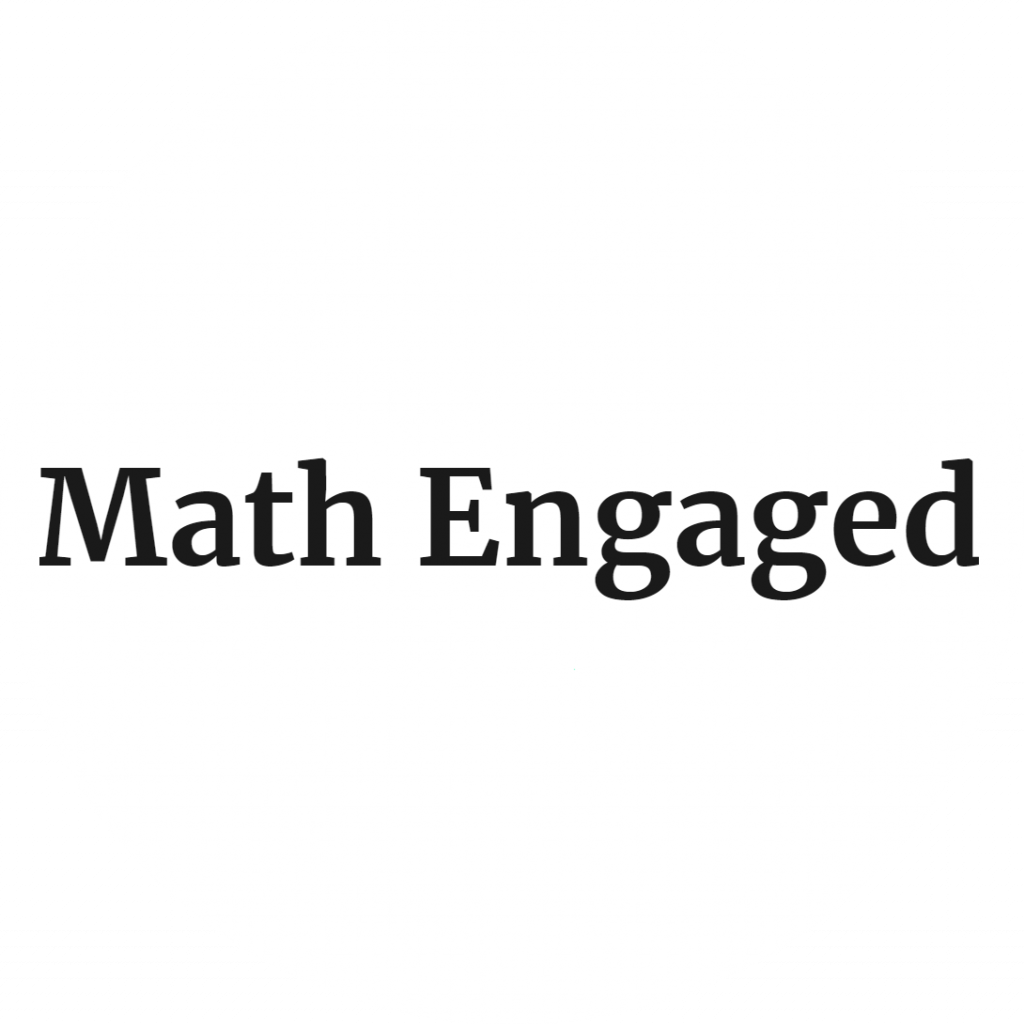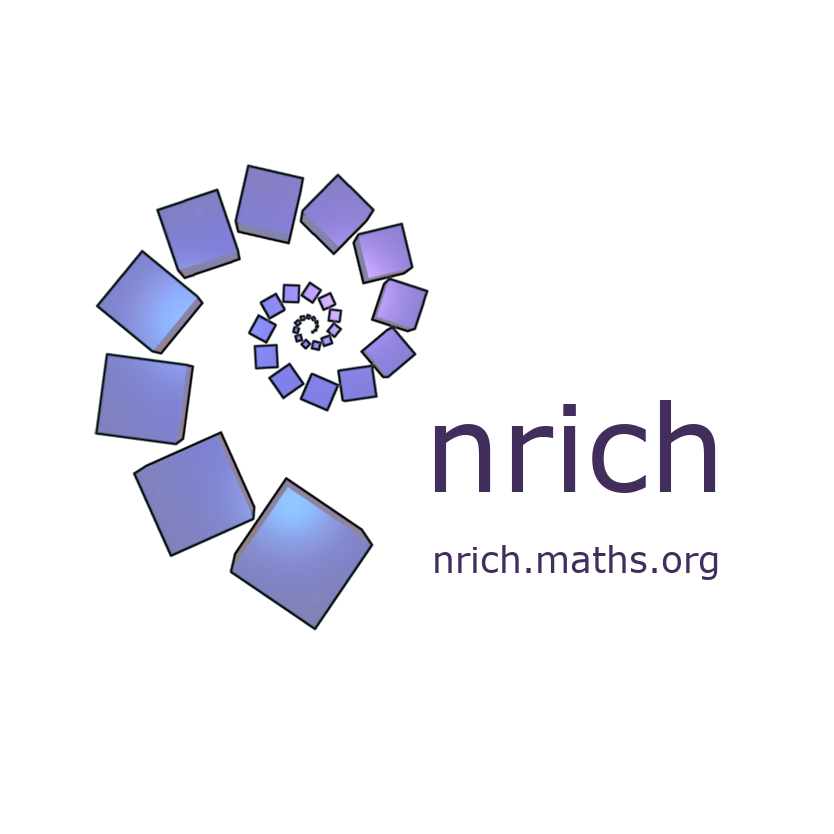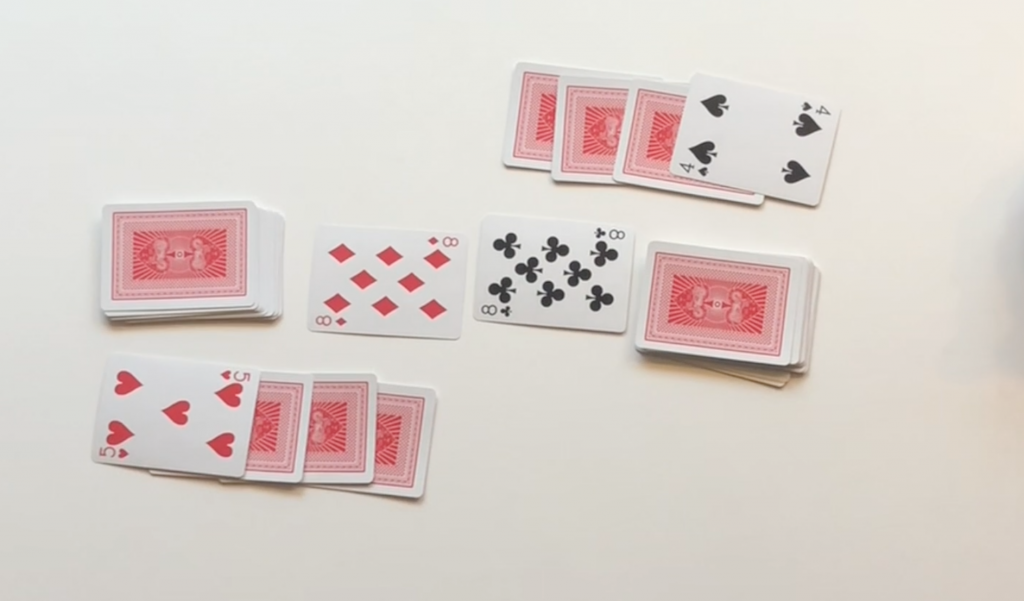In a past blog, we discussed the power of games to promote and reinforce mathematical thinking. As we head into this unusual holiday season a year later, it seems a good time to revisit some of these ideas, focusing on the myriad possibilities of a deck of cards.
The first playing cards appear to have originated in Tang dynasty China around the 9th century CE with the invention of woodblock printing; the card game craze rapidly spread through Asia, the Middle East, and North Africa. The first credible European mention occurs in Italy in 1377 in a diatribe against the moral evils of card-playing, after which an avalanche of bans across the European continent has been documented. Along with the unflagging popularity of card games over a millennium, there has arisen an entire field of scholarship devoted to every imaginable aspect – from sociology to aesthetics to symbolism – exemplified by a famous (to afficionados) 1000 volume collection at Vanderbilt University.
When we introduce children to a set of common playing cards, therefore, we induct them into a longstanding and wide-ranging cultural practice. As they first hover on the fringes then begin to join into multigenerational games within their extended family, children see themselves, not as recipients of another child-improvement lesson, but as emerging participants in a larger social and cultural enterprise. Like many traditional games, playing cards combine utter simplicity with limitless versatility; indeed, the versality inheres in the simplicity. The structure of a card deck with its numbered suits is founded upon mathematical principles, and most card games, from the most basic to the most complex, require and build mathematical reasoning. They offer opportunities for joyful repetition and extended practice with concepts at many levels, strategy development within rule-governed constraints coupled with the luck of the draw, and vicarious learning in a heterogeneous social setting. Most important, perhaps, children experience the motivating power of growing mastery in an engaging, playful context that matters to them.
Initially, for a young child, working memory demands as they learn the components of a game from scratch can be overwhelming, and the presence of a supportive adult may be essential, both to facilitate the implementation of rules and procedures and to make the math explicit at an appropriate level. As children become familiar with the common protocols and structures underlying most variants of card games, their ability to quickly and independently pick up new games develops rapidly. Adult facilitators sometimes straddle a fine line between providing support and exerting pressure. It’s generally advisable to tread lightly and take your cues from the child, ready to back off when mathematical probing is met with an indifferent shrug; to, at times, simply provide the information a child needs to move forward.
For the child, keeping the game going to its conclusion is the goal. When a young child with shaky numeral recognition tires of counting card pips to confirm a card’s value, an adult might move things forward by quickly modeling the counting or naming the value. Similarly, gauging whether to correct a mid-game miscalculation is a judgement call – if a child is consistently inaccurate, the game is too difficult, but the odd slip probably isn’t worth dwelling on. As teachers, we sometimes overestimate the benefits of constant challenge (or the wrong kind of challenge) in sustaining engagement or making an activity worthwhile. Yet there is also value in repetition of the tried and true. Mathematically expert adults continue to be challenged by games they know well; do we need to distract children mid-play with questions irrelevant to their own purposes? It is sadly easy to take the play out of play, and it may be preferable to set aside another time for instruction and allow the game to maintain its integrity, to proceed as a game.
Card games are endlessly adaptable, and a great deal of valuable support occurs indirectly, behind the scenes. Minor adjustments to the size of the deck, the numbers represented, or the end goal make most existing games accessible and engaging for most ages. For young children just learning about cards and how they work, for example, it can be helpful to remove the face cards or to white-out the extra small symbols beneath the numerals which confuse efforts to determine the card’s value through counting. Leaving cards visible rather than hidden helps an adult prompt a child more effectively. It also gives that child an overview that eventually helps them build a stronger awareness of relationships and strategy.
Games not only provide opportunities for scaffolding concept development, they also offer a wonderful chance to observe children’s thinking in action. While parents or older siblings may adapt standard games just enough to allow a younger child to enter into play, teachers will often tweak traditional card games in order to focus on a particular skill or meet specific curriculum goals. Constance Kamii, a staunch advocate for the use of play and games in mathematical learning, offers acutely detailed analyses of children’s math reasoning through a Piagetian lens. Two of her books, Young Children Reinvent Arithmetic: Implication of Piaget’s Theory, Grade 1 (2000) and Young Children Reinvent Arithmetic: Implication of Piaget’s Theory, Grade 2 (2004), describe year-long collaborations with Grade 1 and 2 teachers whose numeracy curricula were entirely based in modifications of classic card games. Post-testing showed the children in the card games classrooms to surpass those taught more traditionally in all numeracy areas, including rapid calculating. One useful chapter summarizes each game in detail; a more recent piece (Kamii, 2015) describes by grade level some mathematically valuable card games she has adapted for children in Kindergarten to Grade 3. An article written with colleagues (Kato, Y., Honda, M., & Kamii, C., 2006) analyzes with meticulous precision the different thinking levels engaged in by kindergarten children as they play a teacher-created card game. It beautifully shows how observing and listening to children as they play provides a window on their understanding.
Confirming the value of card play in mathematical learning, other researchers in math education have also offered lists and descriptions of developmentally informed card games. Some useful resources include a family card booklet for children aged about 4-7 compiled by the DREME (Development and Research in Early Mathematics Education) group at Stanford University. Along with instructions for playing each game, it systematically spells out developmental guidelines for selecting and adapting them. Enticing games that will appeal to older children can be found on the Math Engaged website, as well as in the Nrich collection of math games and activities.
CARD GAME RESOURCES
The simplicity and adaptability of cards lend themselves to use in many settings. As a response to the Covid-19 pandemic, the Robertson Program launched a card game project last spring – Online Playful Math – which allows small groups of children to play virtual card games in real time, guided by an educator over Zoom using a purpose-built card playing platform (playingcards.io). Watching children as they move through the program has vividly confirmed how genuine engagement and a sense of fun set the stage for learning. Children express enthusiasm for the way instructors incorporate “math and fun activities together” and embrace the opportunity to “communicate with other kids through card games”. Robertson director Larisa Lam, who has spearheaded the initiative, comments, “It’s engaging because there’s always a purpose to doing the math. We’ve had quite mixed groups in terms of age or skill, but kids can usually access the game, wherever they are in math skill. Because a game has many rounds, there’s always another chance, and when they keep playing, with all that repetition, their math improves without them even thinking about it. It’s a very social process. Other players can help you with hints and you get to hear other children reason, organically, because that’s how they figure things out and justify what they’ve come up with. The number one priority, though, is to build relationships, among the kids and with the educators. And to keep the game flow going. It’s OK if a child doesn’t fully get everything right away.”
Finally, no discussion of playing cards and children is complete without mentioning two other rich realms of possibility – building card structures and performing magic tricks. Each is fully mathematical in its own way and there is a wealth of ideas, instructions, and video examples to be found online. Depending upon the age of the builder and the complexity of the building, card towers employ high levels of geometric, numeric, and algebraic reasoning, spatial visualization and planning, a grasp of physics, and lots of patience! To perform and unpack mathematical card tricks, an older child might try these to get started: cunning card trick, the best card trick?, amazing card trick, mathemagical card tricks – there are many examples geared to younger children as well. Once your kids go down this path, it may be difficult to stop them!
CLASSIC GAMES USED IN ONLINE PLAYFUL MATH
War: Kindergarten+
Players: Usually 2, but can accommodate 1 – 2 more
Deck: Depending on age and sophistication of child, may remove face cards or shorten the pile. A = 1
Math Concepts:
- Basic game: Counting, subitizing, comparing quantities, equality, and inequality
- With modifications: Addition, subtraction, multiplication, place value
How to Play
Deal out the entire pack to the players so each player has their cards face down in a pile in front of them. Players simultaneously turn over the top cards of their piles. The player with the larger number takes both cards. When two players turn over the same highest number, a war is launched – each player puts down 2 more cards, face down, then turns up a third card. The person with the highest card takes all the cards in that round and play continues until one person runs out of cards or players agree to stop. The winner has the most cards.
Possible Modifications (children will also love to invent other variants):
- Player with the smaller number wins each round.
- Addition War, Subtraction War, Multiplication War, etc. Players turn up two cards each round. Player with the largest sum (or difference, or product) takes all. Face cards can count as 11, 12, 13.
- Double digit war. Players turns up two cards and places them beside each other to make the biggest possible number. Player with the biggest two-digit number takes all.
Quinze (Fifteen): Primary/Junior
Players: 2 – 4
Deck: Number cards 1 (Ace) – 10
Math Concepts:
- Addition
- Equality and inequality
- Algebraic reasoning
- Comparing numbers
- Estimation
- Mental math
How to Play
The aim is to get as close to 15 as possible without going over. Dealer deals two cards to each player, face down. Players look at their own cards but hide them from the others. When it’s their turn, they decide if the sum of their two cards is close enough to 15 or if they want to request another card. Play continues until someone decides they’re satisfied with their total or goes over 15. The winner is the player whose cards’ total is closest to 15 (including 15) but not more.
Possible Modifications:
- Change the target number.
- To make the game easier, players still aim for 15 but can be either over or under the target number by as little as possible.
- Add “wild cards” (e.g., a Joker) that can be assigned a value by the player who draws it.
- Winner of each game gets a point (token or tally mark). Winner is the first to accumulate ten points.
Closest to… : Primary/Junior
Players: 2 – 4
Deck: Number cards 1 (Ace) – 9
Math Concepts:
- Place value
- Number sense
- Comparing numerals
- Whole numbers, decimals (depending on level)
How to Play
Each option represents a new level of challenge in this game. It’s best to introduce the simplest version (A) then increase the level of challenge until children have reached their limit.
A. 2-Digit Numbers:
Deal out 2 cards to each player. Each player arranges the two cards to form the two-digit number that is closest to 50. Players each show and name the number they have created. Winner of the round gets a point. Continue for as many rounds as players wish. Player with most points wins the game.
Possible Modification:
Instead of coming closest to 50, player with the highest (or lowest) number wins the round.
B. 3-Digit Numbers and Beyond:
Same rules as in A except the target number is a 3-digit number (500) and each player gets three cards per round.
- Player with highest (or lowest) number wins the round.
- Use four cards to build 4-digit numbers, target number is 5000.
- Pick different, less regular target numbers: e.g., 92 or 487 or 2974.
C. Taking a Chance (3-Digit Numbers):
Deal out one card at a time. Each player turns their card over and decides which place value to assign it, placing it in the 1s, 10s, or 100s column. Repeat over 5 rounds: children have option of discarding up to two drawn cards. Player with number closest to target number scores 3 points, second closest scores 2 points, others score 0 points.
- Use cards to create highest or lower 3-digit number.
- Expand range of possibilities by including decimals.
24: Junior
Players: 2 – 4
Deck: Number cards 1 (Ace) – 10
Math Concepts:
- Addition, subtraction, multiplication, division
- Mental math
- Algebraic reasoning, equations
- Order of operations
- Procedural fluency and flexibility
How to Play
Dealer deals out four cards to each player. Players create an equation with the four cards that comes as close as possible to 24. For example, Player 1 draws 4, 5, 8, and 10 and creates: (4 × 10) ÷ 8 × 5 = 25. Player 2 draws 3, 4, 5 and 10 and creates (3 × 4) x (10 ÷ 5) = 24. Winner is the player whose equation comes closest to 24.
Possible Modifications:
- Change the target number.
- All players work with one common set of four cards, turned over from a pile in the centre. This encourages multiple solutions to the same problem. See how many combinations equaling 24 they can find!
- Include other operations e.g., exponents and roots.
- Figure out which combination of numbers yield the most combinations leading to 24. Are there any combinations that can’t form an equation equal to 24?
Author

Julie Comay
Faculty in the Master of Arts in Child Study and Education program and former elementary teacher at the Dr. Eric Jackman Institute of Child Study






